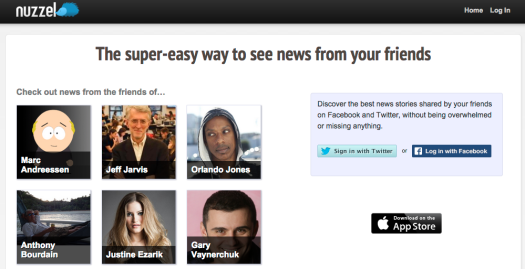Since Twitter has gone public, we’ve frequently heard about their growth problems; in particular, their trouble converting new users into active users. These problems aren’t difficult to believe. As a new user, what do you tweet about? With zero followers, why begin tweeting? And, who do you follow? Your timeline is useless until you follow enough of the right people.
I’ve been mulling over this problem for fun, and thought I’d play armchair quarterback for a blog post.
Back to basics: what is Twitter?
First, it is important to understand the core product that is Twitter. What is it? Some might call it a social network. Others might call it a micro-blogging platform. These might have been somewhat accurate in the early years, but at scale, I believe Twitter to be something else.
Twitter is the world’s democratized newswire.
Anyone can add to the newswire by tweeting. And anyone read the newswire by following users who tweet.
From newswire to newspaper.
There’s just one problem with being the world’s newswire: most people have little to no use for a newswire.
Most people don’t create news to add to a newswire. And, most people don’t keep up with real-time news. This presents a big problem for Twitter. The only way to grow is provide value to a mass audience, and in the history of news, the newswire has never been widely used by the masses.
The good news for Twitter is that the masses do want the news: they just want an easily accessible form of the news. They want a great newspaper. Or a great news report on the TV.
If Twitter understand this, the next steps are clear: Twitter needs to become the world’s best personal newspaper.
Twitter power-users might say that Twitter is already their personal newspaper. I would be inclined to agree. I check it everyday and use it as my personal newspaper. But if that was the goal of the current product, Twitter would be doing a poor job of it.
The New York Times, Twitter style.
As a fun thought exercise, lets imagine a Twitter-like New York Times experience:
- A friend raves about their version of the NYT. You go online to check it out, and can’t read it.
- You subscribe to an empty paper, and are prompted to follow your favorite reporters and columnists.
- You are given a reverse-chronological feed of stories, and need to figure out what is important for yourself.
Sound like a terrible newspaper experience?
A Twitter that could be.
Fortunately, these points lead directly to product suggestions:
- Let us see other newspapers. If I have a friend that loves Twitter, I want to know why. The easiest way to do that is to let me see what my friend sees.
- Let us subscribe to someone else’s newspaper. If I think my friend’s Twitter feed is interesting, I’d like to start with it. If I’m into startups, and find that @pmarca has an interesting newspaper, I’d like to merge it into my newspaper.
- Tell us what matters. If there are a few important stories, tweets, or tweet-storms from the past 24 hours, I want them to be easily accessible.
And this is just the beginning; the newspaper analogy can be taken further. As an example, The New York Times has various sections including International, Technology, Weather, Sports, etc. Perhaps my personal newspaper should have sections for my interests. These might be generalized Twitter lists, or something else.
Obviously, these are high level suggestions. Designing specific mechanisms for enabling these interactions isn’t trivial. For example, suggestion 2 might change how following works on Twitter, potentially breaking Twitter’s follow limits and increasing follow spam. Suggestion 3 would change Twitter’s relationship with some apps built on top of Twitter (which has always been a shaky relationship anyways).
Twitter for non-tweeters.
In a recent interview, Dick Costolo, the CEO of Twitter, acknowledges this, saying that it is OK for users not to tweet (excerpted below).
Farhad Manjoo: Do you ever meet people who don’t use it or don’t know why they would use it? What is your pitch to them?
Dick Costolo: I meet people who way, “Oh, I don’t tweet.” I think there’s still a misconception that the reason they’d sign up is to tweet. When I meet then, I tell them, “No, you don’t have to.”
Twitter seems like they are beginning to understand the importance of the news consumption experience, although they haven’t been good getting this across, and they haven’t been good about designing for it.
There is one startup seems to get it. Their product isn’t glitzy, fast, or beautiful, but it solves a need. Nuzzel takes your Twitter account, and generates a daily newspaper of frequently shared links from the people that you follow. This is great for Twitter users who are busy and can’t keep up with the barrage of tweets in their timeline every day.
If you check out their home page (above), you’ll also see that Nuzzel lets you see the links frequently shared within other people’s newsfeeds (just like suggestion 1 earlier).
If I were Twitter, I would think about acquiring Nuzzel.


